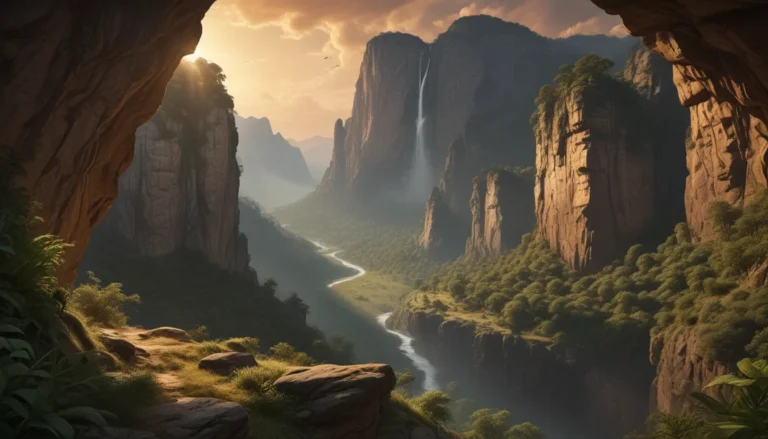A Note About Images: The images used in our articles are for illustration purposes only and may not exactly match the content. They are meant to engage readers, but the text should be relied upon for accurate information.
Are you ready to embark on an adventure through the world of shield volcanoes? These massive, low-profile formations with calm lava flows have captured the imagination of scientists and adventurers for centuries. From their formation and location to their eruption patterns and geological significance, shield volcanoes offer a plethora of intriguing facts waiting to be uncovered.
Key Takeaways:
- Shield volcanoes, with their gentle slopes and diverse ecosystems, can be found on Earth and other celestial bodies, showcasing the dynamic nature of our planet.
- The Hawaiian Islands boast iconic shield volcanoes like Mauna Loa, characterized by shallow magma chambers and non-explosive eruptions that can span thousands of years.
Shield Volcanoes: Majestic Giants of the Earth
Shield volcanoes stand out as some of the largest volcanic formations on Earth, towering with their broad, gently sloping sides and distinctive low-profile shape. The name “shield” perfectly captures their resemblance to a warrior’s shield, resting gracefully on the ground.
Unraveling the Formation of Shield Volcanoes
These impressive volcanoes are born from low-viscosity lava flows, unlike the more explosive eruptions seen in other volcano types. The Hawaiian Islands, renowned for their shield volcanoes like Mauna Loa and Kilauea, serve as prime examples of these majestic formations.
Discovering the Geological Significance
Typically found in areas of volcanic activity, shield volcanoes are linked to hotspot volcanism, where a mantle plume creates a hotspot beneath the Earth’s crust. The largest shield volcano on Earth, Mauna Loa in Hawaii, reaches heights exceeding 13,000 feet above sea level and extends even deeper below the ocean’s surface.
Eruption Patterns and Lifespans
Shield volcanoes boast shallow magma chambers, leading to non-explosive eruptions characterized by calm lava flows. Some shield volcanoes can continue to erupt for thousands or even millions of years, gradually expanding their size through multiple eruptions.
Diving into Ecosystems and Geological Features
The formation of shield volcanoes is an ongoing process, marked by multiple eruptions building up layers of lava over time. These volcanoes often feature a central vent or summit crater, while their slopes can be prone to landslides due to the weight of accumulated lava.
Supporting Diverse Ecosystems
Shield volcanoes create fertile soil and gentle slopes ideal for supporting diverse ecosystems, showcasing the resilience of plant and animal life in these volcanic landscapes. Lava tubes, natural tunnels formed by eruptions, and extensive lava flows further add to the unique geological features of shield volcanoes.
The Fascinating World of Shield Volcanoes Beyond Earth
While shield volcanoes are commonly found on Earth, they also exist on other celestial bodies like Mars and the moon Io, shedding light on the geologic processes shaping planetary surfaces. The word “pāhoehoe” in Hawaiian refers to the smooth, ropy texture of lava flows associated with shield volcanoes.
Journeying through Shield Volcanoes: A Reminder of Earth’s Dynamism
Shield volcanoes offer an awe-inspiring glimpse into the dynamic processes shaping our planet over millions of years. Their immense size, ongoing geological evolution, and unique ecosystems serve as a testament to the Earth’s ever-changing landscape and the intriguing world of volcanic activity.
FAQs: Unveiling the Secrets of Shield Volcanoes
- What is a shield volcano?
-
A shield volcano is a volcanic landform characterized by its broad, gently sloping shape resembling a warrior’s shield, built from multiple layers of fluid lava flows.
-
How are shield volcanoes formed?
-
Shield volcanoes form through effusive eruptions, where runny lava flows steadily from the volcano’s vent, gradually building up the shield-shaped structure over time.
-
Where can shield volcanoes be found?
-
Shield volcanoes can be found in various parts of the world, with iconic examples like Mauna Loa in Hawaii, Mount Etna in Italy, and the Galapagos Islands in Ecuador.
-
How big can shield volcanoes get?
-
Shield volcanoes can reach immense sizes, measuring tens of thousands of square kilometers in area and towering several kilometers above their surroundings.
-
Are shield volcanoes dangerous?
-
While less explosive than stratovolcanoes, shield volcanoes can still pose dangers such as lava flows and volcanic gases during eruptions.
-
Can shield volcanoes erupt more than once?
- Yes, shield volcanoes can erupt multiple times over their lifespan, showcasing the ongoing nature of geologic processes that shape these volcanic landscapes.
Conclusion: Embracing the Geological Wonders of Shield Volcanoes
Shield volcanoes stand as remarkable geological formations that not only captivate with their beauty but also offer valuable insights into Earth’s dynamic processes. From their effusive eruptions to their diverse ecosystems, these volcanoes hold a wealth of fascinating facts waiting to be explored. Embark on a journey through the captivating world of shield volcanoes, and witness the ongoing evolution of our planet’s landscape through these majestic volcanic wonders.






